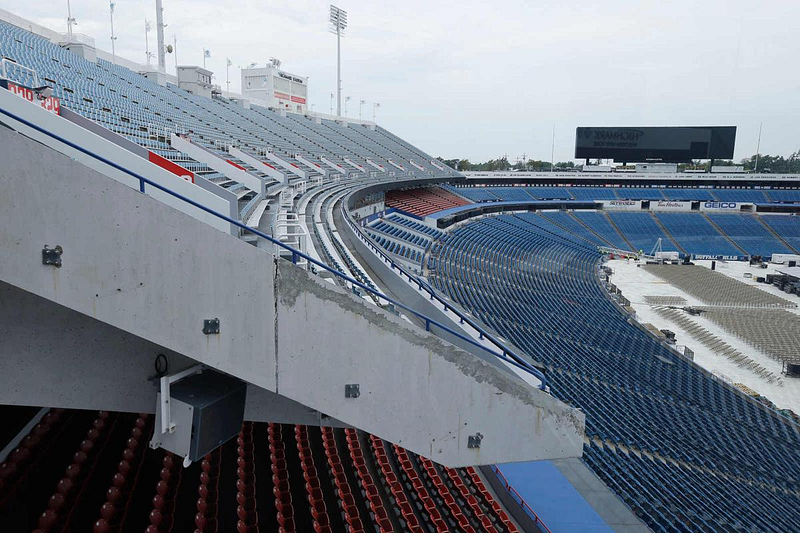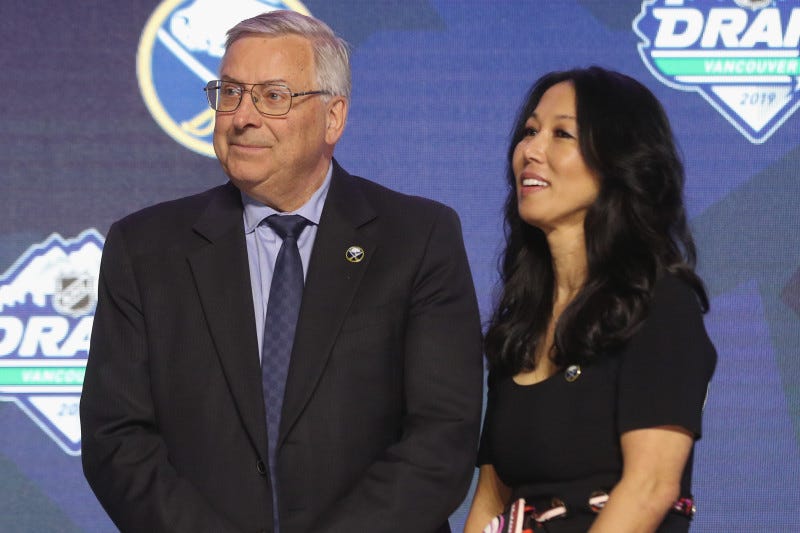
Every year in late March, NFL owners, coaches and media members escape the bitterly cold cities most call home to meet in the sunbelt to discuss the league’s future. This year in Palm Beach, Florida, the owners did just that. Teams agreed to new postseason overtime rules to guarantee both teams at least one possession, a strengthened Rooney Rule to prompt great hiring diversity and the AFC champion Cincinnati Bengals announced the construction of a new practice facility. However, perhaps the most significant news to come out of this gathering of football minds was the announcement of the impending construction of a new stadium for the Buffalo Bills.
Owners unanimously agreed to a proposal for a new stadium for Western New York’s own Buffalo Bills. This came after meetings between team owner Terry Pegula and New York Governor Kathy Hochul. Under the deal, the NFL would contribute $550 million, while $850 million would come from the public with the state contributing $600 million and Erie County pitching in $250 million. The combined $1.4 billion would all be going to the construction of a new stadium in suburban Orchard Park to replace the aging Highmark Stadium, which has been in use since 1973. The 60,000-seat stadium will be built without a roof, a questionable decision for one of the NFL’s coldest markets.
Bills fans have a love-hate relationship with their home. The stadium historically known as Ralph Wilson Stadium has seen some very high highs and some very low lows, but all roads have led to defeat. Led by Hall of Famer Jim Kelly, the Bills went to four straight Super Bowls between 1989 and 1993 but always came up short. Since then, the team has deteriorated much like the city it calls home, suffering the longest postseason drought in the 21st century: 16 years without a playoff appearance, a feat only matched by the NBA’s pitiful Sacramento Kings.
But recent years have seen dramatic improvement. Since the arrivals of Head Coach Sean McDermott and quarterback Josh Allen in 2017 and 2018 respectively, the Bills have seen their fortunes improve dramatically. The Bills have made the playoffs in four of the last five years and have become an AFC powerhouse. The city loves their team. They are a fanbase made famous for their rowdy nature which has earned them the moniker the “Bills Mafia.” But like everything in modern sports, that love has been manipulated for profit.
As stated, the proposal would shift more than half the cost onto the public. The deal gives the new stadium only 60,000 seats, 10,000 fewer than Highmark currently has and 1,500 fewer than Soldier Field, currently the smallest in the league. This allows the Pegulas to restrict supply to drive up ticket prices and sell more premium seats. It all drives back to this desire to extract as much revenue as possible. But if this is such a bad deal, why did the state agree to it?
Buffalo’s metropolitan area is the smallest with an NFL team besides Green Bay. It’s also a cold, economically depressed area. Nobody’s rushing to move to Buffalo. The only people keeping the team in Western New York are the fans. Historically, teams tend to relocate from economically depressed cities to those on the rise. Take recent examples such as the Oakland Raiders to Las Vegas or the St. Louis Rams to Los Angeles. Owners are making calculated, economic, emotionless decisions. But if an owner wants a new taxpayer-funded stadium, they can use that intense fan emotion to mobilize political action. This mentality allowed the Fiserv Forum to be built for the Milwaukee Bucks with $250 million in taxpayer support after the team threatened to move to Seattle or Las Vegas. Before this deal broke, the Pegulas reportedly had engaged in talks to move the team to Austin, Texas, a growing city with warmer weather. The only way Buffalo can compete with that is with a deal as bad as this one. Governor Kathy Hochul is a Buffalo native, and crucially needs the region’s support to stave off her primary challengers. She caved to the pressure, and now all of New York is paying that price.
This is not the first time New Yorkers have been screwed in a stadium deal. Brooklyn lost the Dodgers after the city government refused to build a new stadium. Plans for a Manhattan football stadium fell through in favor of the Hudson Yards Development due to conflicts between the Democratic Assembly with the Republican governor and mayor. This resulted in both the Jets and Giants remaining in New Jersey. That’s the real problem: the Bills are the last hope for pro football in New York. The Empire State had to make a deal, and now it pays an incredible price.

















